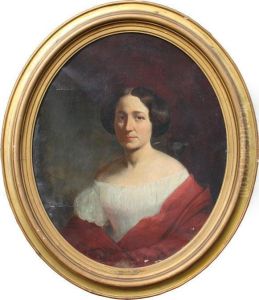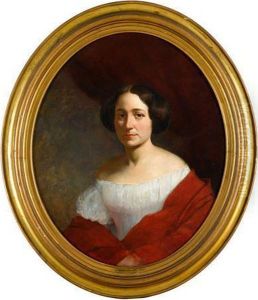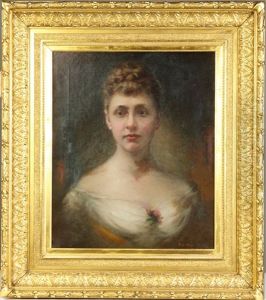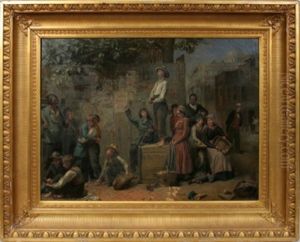Thomas Leclear Paintings
Thomas Le Clear, born in 1818, was an American painter known for his portraits, genre scenes, and interior still lifes. Born in Oswego County, New York, Le Clear developed an interest in art at an early age, but his early life was marked by hardship. His father died when he was young, and he was apprenticed to a cabinetmaker, where he likely received his first exposure to varnishes and finishes, which may have sparked his interest in painting.
Le Clear began his career as an itinerant portrait painter, traveling around the United States to find commissions. His work during the 1840s and 1850s helped him to develop his skills as a portraitist, and he painted numerous prominent figures of the time. He settled in New York City in the late 1850s, where he established a studio and began to gain recognition for his work. His portraits were known for their fine detail, realistic representation, and psychological depth, which set them apart from the work of his contemporaries.
By the 1860s, Le Clear was a well-established artist and became associated with the National Academy of Design, where he was elected as an Academician. His genre paintings, which often included portraits within domestic settings, were also well received. His painting 'Interior with Portraits' is a prime example of his genre work and is considered one of his masterpieces. It showcases his ability to combine portraiture with narrative storytelling.
Le Clear's career continued to flourish throughout the 1870s, with commissions coming from wealthy patrons and public figures. His ability to capture the character and status of his subjects made him a sought-after portraitist. Despite his success, there is not a vast amount of information readily available about his personal life. Thomas Le Clear passed away in 1882 in Rutherford Park, New Jersey, leaving behind a legacy of finely crafted paintings that are still studied and admired today.



